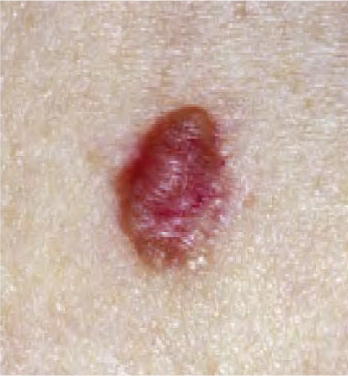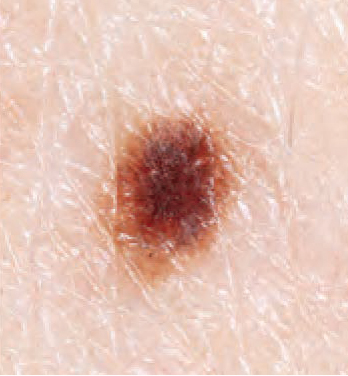Spotting Skin Cancer
Skin cancer is the most common form of cancer in the U.S. It’s also largely preventable. The National Cancer Institute provides the information below about common types of skin cancer and risk factors.
Common Types of Skin Cancer
The three most common types are found on the top layer of the skin: basal cell, squamous cell and melanoma. Exposure to the sun and ultraviolet rays are the leading cause of these types of cancer.

Basal cell cancer grows in areas of your body that are more exposed to the sun, such as your head and neck. They grow slowly, rarely spread and are the least likely to cause death.

Squamous cell cancer is found on the outer layer of the skin, usually on your face, ears, neck, lips and back of your hands; the areas of your body that get the most sun. The cells can spread to other places in your body, but if caught in time, can be removed and are not deadly.

Melanoma cancer is much less common than basal cell and squamous cell cancers. However, the cancer cells are more likely to grow and spread if left untreated. Although it is the least common of skin cancers, it is the most deadly.
Skin Cancer Risk Factors
- Exposure to natural or artificial sunlight over long periods of time.
- Having a fair complexion. However, people of all skin tones can get skin cancer.
- A history of blistering sunburns, especially as a child or teenager.
- Having a personal or family history of skin cancer.
Melanoma
The first step in knowing what treatment modality to choose is by staging the melanoma. Since outcomes for cancer patients with malignant melanoma are much better if the disease is caught in early stages, it is important for everyone to protect and check their skin regularly, to be familiar with what their skin looks like and to report any changes in existing skin spots or new areas of concern.
If detected early enough, surgery is the main treatment option and typically cures most melanomas that have not metastasized or spread to other parts of the body. Through treatment is not as successful for melanomas that have metastasized, there are a variety of treatment options available.
Immunotherapy and targeted therapy are newer forms of treatment that have fewer side effects than traditional chemotherapy. Immunotherapy agents boost a patient’s own immune system to attack cancer cells. Targeted therapies attack parts of melanoma cancer cells that make them different from normal, healthy cells.
Chemotherapy is not always tolerated well by patients because it destroys all rapidly dividing cells, even the healthy ones. Although radiation is not typically used to treat melanoma, it can be a treatment options for some uncommon melanoma types or when surgery is not an option.